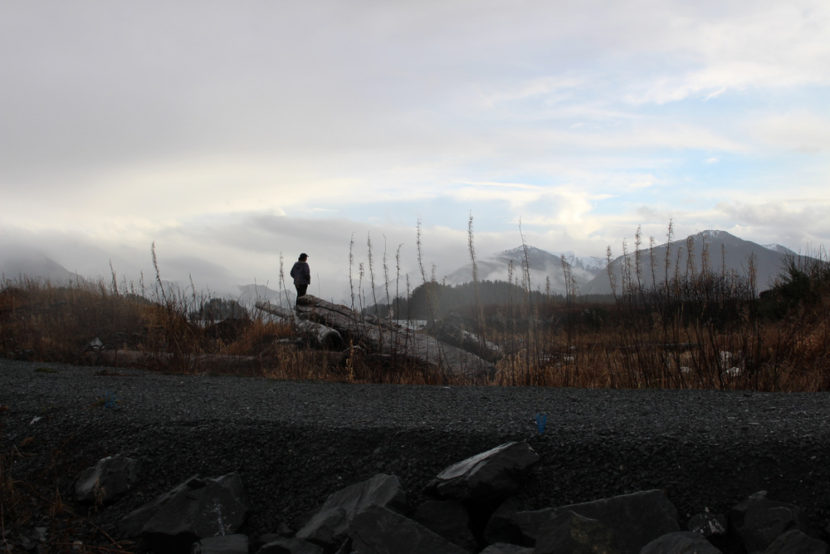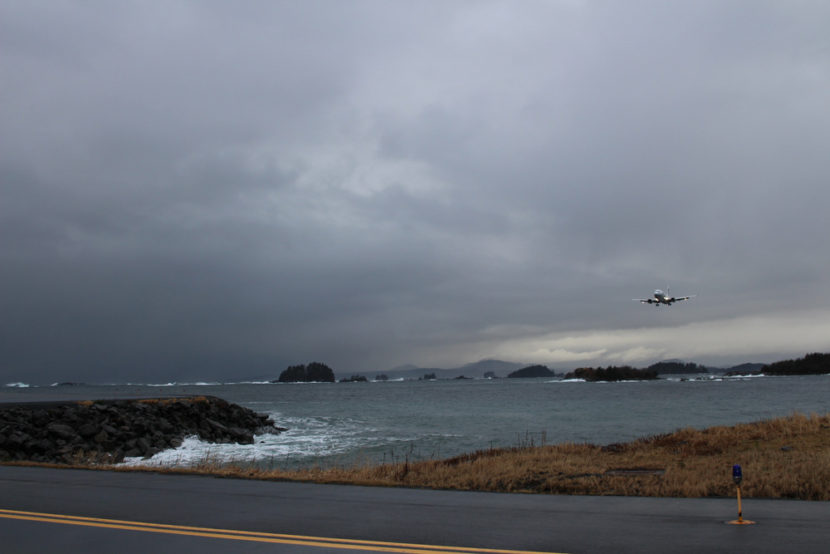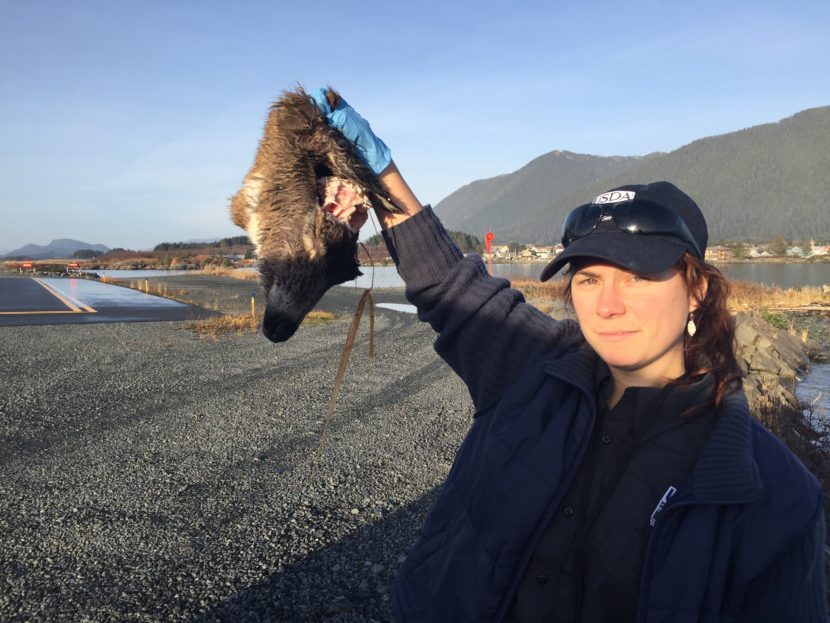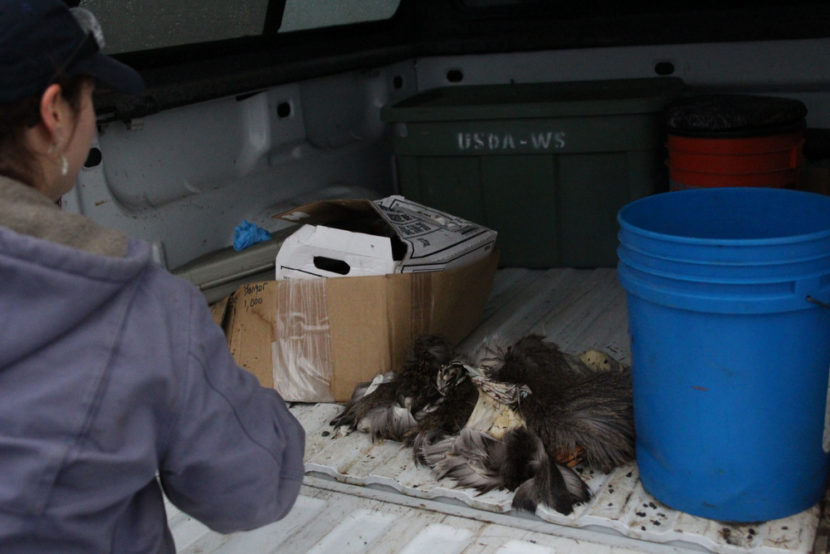
Throughout this year’s hunting season, Sitka’s airport has been contending with an unusual issue: dead deer. Carcasses have been washing up on the runway since November, attracting birds. And this is a big problem.
You know those contraptions where a hammer hits a ball which drops into a bucket which cracks an egg or something? Well, this story is set inside Sitka’s very own Rube Goldberg machine.
Heather Bauscher works for the U.S. Department of Agriculture as a wildlife specialist. Her job is to clear of the runway of wildlife that could interfere with air traffic. Mostly it’s creatures of the sky: eagles, seagulls, and ducks.
But lately, Bauscher’s biggest nemesis is deer.
“There’s a lot of steps between somebody pitching some animal remains overboard or leaving them on the beach and planes crashing,” Bauscher said. “But it can happen.”
Carcasses have been washing up on the runway ever since the subsistence hunting season opened on Nov. 1.
In her truck, Bauscher speeds down the exposed airport runway. It’s like a tarmac popsicle sticking out into the middle of the Pacific Ocean. Because of its design, carcasses tend to wash up on or near the runway every week. It’s like a buffet called for birds.

“Some of these coves really act as a catch all. You’ll see all sorts of debris. I mean, look at the way the waves are crashing and the water is pushing things in,” Bauscher noted as she slowed her truck near a wind sock. She catches a glimpse of something in the rocks and scrambles down. Someone’s sneaker is floating in there.
“Yep, all kinds of debris,” Bauscher says.
It’s debris soup really. But with her keen eyes, Bauscher spies a white tuft of hair.
“See a little bit right there?”
A deer head.

She picks up a branch that had washed up nearby and pokes the deer head, eventually spearing it. She scales the rock wall triumphantly, and holds the deer head high in her gloved, blue hand. It smells like death.
Bauscher chucks it into the back of her truck. One section is smeared with blood and animal parts. She has to wash it pretty often.

Now think about it: all this collection work for one deer head that could theoretically attract a bird that could theoretically collide with a plane. Is it worth all the fuss?
Bauscher said that on a runway as exposed and wild as Sitka’s, it’s essential. This year alone, she’s counted 136 species of birds in the vicinity of Sitka’s runway.
“If a bird strikes a plane, chances are it could severely damage the turbine to the point of completely destroying that engine,” she said.
In 2010, an eagle flew straight into the engine of a Boeing 737 that was roaring down Sitka’s runway. No one was hurt – commercial planes have two engines – but at other airports across the country, wildlife strikes have downed planes and killed passengers before.
In 2009, pilots had to make an emergency landing in the Hudson River after birds knocked out both engines. Public pressure from that event motivated the Federal Aviation Administration to release data that year, which reported 60,000 bird strikes since 2000. Basically, it can happen to any plane with any bird. All it takes is some bad timing. And Bascher said the USDA doesn’t want to take the risk.
“Because we’re not going to have a ‘Miracle on the Hudson’ in Sitka,” she said. “I mean … look at it! There’s too many rocks. And how many times are you on a plane where you know the other people on that plane? Always. There’s always people you know on that plane and the way the flight runs from Seattle to Anchorage, if there was something horrible that happened because of a bird strike, there would be no way this whole community wasn’t impacted much less all of Southeast Alaska. And I think it would be a real shame for that to be because of some deer carcasses or fish carcasses or something that could have been preventable.”

Phil Mooney, the area management biologist with the Alaska Department of Fish & Game, urged those hunting to be more conscious of this very real connection between the sea and sky. And that means not dumping your carcasses on the side of the road.
“Don’t put it on the roadside. Don’t throw it in the water particularly. If you can put it in your garbage can, that’s great,” Mooney said.
And if pick-up isn’t for awhile or the carcass is getting stinky, Mooney recommends taking it to the Jarvis Street Transfer Station or the Alaska Raptor Center. Fortress of the Bear said it’s not accepting carcasses, but will begin again in the spring.
Mooney sympathizes with Sitkans who want to return the wildlife carcasses back to nature, but stresses that that kind of thinking is too risky in a city of 9,000 with over half a dozen daily flights. “People think, ‘OK, this one deer carcass isn’t going to hurt anything, or these two deer carcasses.’ But take that times how many hunters we’ve got out here and a good deer year and it gets to be a problem,” Mooney said.

Back on the runway, Bauscher has just enough time to scatter a group of ducks. She shoots pyrotechnics out of a gun. One called a silver comet explodes in the air. It’s blue with sparkles.
She notifies traffic control the runway is clear. Her eyes follow the noon plane’s takeoff. She says her superpower of choice would be to talk to animals and tell them not to hang out on the runway, as beautiful as it may be. Bauscher clearly loves her job.
